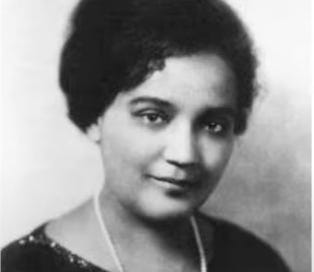April HONEY Culture Club - Let's Talk about Harlem Renaissance Pioneer Jessie Fauset
Jessie’s legacy won’t be forgotten. Not on OUR watch.
HONEY Culture Club Honeys, we’re halfway through the month—check-in: how are you loving Harlem Rhapsody by Victoria Christopher Murray so far?
As we countdown to our upcoming kickback with Victoria toward the end of the month, we wanted to ignite the convo in regards to certain themes in this juicy fictional historical book. One major thing that stuck out—aside from the reported scandalous affair with W.E.B. Du Bois—is the fact that it shined a necessary spotlight on Jessie Redmon Fauset. Let’s be real—when most folks talk about the pioneers of the Harlem Renaissance, Jessie’s name is not said enough!!
That ends here and now. We want to preserve Jessie’s legacy by documenting it, Honey-style. We want to give Jessie her flowers. She was the ignition of a movement that every single Black artist living today should credit for their current success.
Spanning the 1920s and 1930s, the Harlem Renaissance was filled with the unique creativity, vibrancy, prosperity, and intellectualism that only Blackness could serve. And Jessie Fauset had an integral role in that impact.
So without further adieu, here are five facts about the incomparable Jessie Fauset:
She was the literary editor of The Crisis and co-editor of The Brownies’ Book
Founded by W.E.B. Du Bois, The Crisis was the NAACP’s magazine geared toward discussions around social justice, art, culture, Black history, and more. With The Brownies’ Book, published to teach African-American kids about their heritage, Jessie essentially paid the knowledge forward for what she lacked in her own childhood.
She was a mentor for some big deal names you know now
Langston Hughes. Countee Cullen. Jean Toomer. Claude McKay. Just to name a few. These names were championed early-on by Jessie. Dubbed the “Midwife of the Harlem Renaissance,” Jessie’s support of these then-young writers was integral to the core of the Harlem Renaissance.
She was the first African-American woman to be inducted into the Phi Beta Kappa chapter at Cornell University
After receiving a scholarship to attend Cornell University, she was invited to join the prestigious academic honor society in 1905.
She was multilingual
At Cornell University, she studied classical languages, including French, German, Latin, and Greek. Additionally, she taught French at M Street High School in Washington, D.C. (now known as Paul Dunbar High School). She later traveled to Europe to earn her advanced degree in French and Latin.
One of the events that helped solidify the Harlem Renaissance was spawned from her debut novel
Here’s the tea—Jessie was initially scheduled to be honored by Opportunity editor Charles Spurgeon Johnson for her debut novel, This Is Confusion. Chile, it was going to be a big, fancy dinner, with an exclusive invitee-list filled with white publishers/editors and Black intellectuals/critics. But, when Johnson approached writer and philosopher Alain Locke to be the M.C. of the event, Locke suggested the dinner honor several Black writers, in general. Though Jessie ultimately (and rightfully) felt like an afterthought, it did serve a larger purpose.
Bonus: In regards to the Harlem Renaissance, Jessie was the most published novelist of that era!!
We forever honor our ancestor, Jessie Fauset. May her talent, work, and impact live on for infinite generations.
TALKBACK
Honeys, it’s time for the interactive part of our HONEY Culture Club. Did you know all of the above facts about Jessie Fauset? Did you learn anything new? Is there another fact you’d love to share with your fellow Honeys? What’s your favorite fact about the Harlem Renaissance in general? Let’s dive deep into this historic richness!
SAVE THE DATE
OK Honeys—mark your calendars! Later this month, Head Honey Felicia Pride will be sitting down to chat with award-winning author Victoria Christopher Murray to talk all thangs Harlem Rhapsody and beyond!
🍯📚 SAVE THE DATE: Saturday, April 26, 2025






